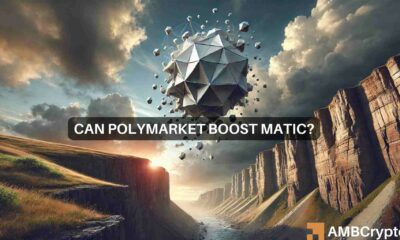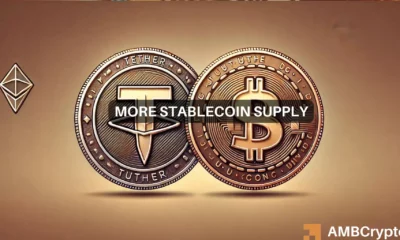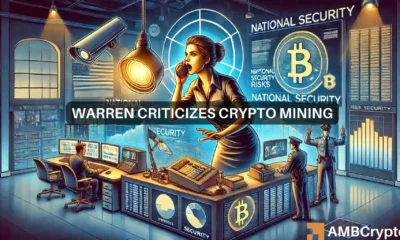Avatars, Oracles, and other forms of Compliance Magic – An interview with Metaverse founder, Eric Gu

The Metaverse SuperNova release has introduced an interesting new concept to the ever-growing playing field of smart contract enabled blockchains: On-chain identities, and built-in KYC verification funnels.
At the center of the new release are what Metaverse calls “Avatars“. An Avatar is essentially a user’s [or company’s] true identity, tied to the blockchain addresses they own. This works a bit like the Internet’s DNS system: following identification, a string of complicated characters [the user’s public key] is represented as a human-readable address that resembles a domain or an email address. Something like JohnDoe@Metaverse. The verification process itself is signed by “Oracles”, which are trusted institutions such as banks or the government itself.
With the new release, owning an approved Avatar is mandatory if one is interested in issuing new digital assets on Metaverse. The rest of us can still remain anonymous.
We sat down with Metaverse founder and CEO, Eric Gu, to better understand what the motivation behind this de-anonymization of the blockchain space is, and if this implies even greater surprises in the future.
Eric is a veteran entrepreneur in the Chinese blockchain space and significantly contributed to the growth of the Ethereum community in the country. Between 2014 and 2016, Eric has spent considerable efforts to convince local authorities to adopt Ethereum. This is also when he understood that fundamental issues will have to be addressed before the technology can go mainstream.
Eric: Already in 2014, I invited Vitalik [Buterin] to the very first Ethereum roadshow in China. We stopped in Beijing, Shanghai, Shenzhen, and Hangzhou. It took awhile for our efforts to bear fruit, but around June of 2016, a municipal government asked our help in creating a blockchain solution for land transfer deeds. At the same time, the DAO attack occurred, and Vitalik decided to hard-fork the Ethereum chain. I disagreed with this because when you hard fork, two land deeds appear on two public chains instead of one. How can you explain this to the municipal government? This is when I understood that a different approach is needed.
Author: So the DAO induced fork was what triggered you to create your own chain. But it seems that since then you’ve diverged quite a bit from how your friends at Ethereum see the future of blockchain.
Eric: I believe Ethereum is a really good project, their developer community is still the strongest. In terms of blockchain-powered trade and business, I don’t think Ethereum will have a great future. In trade and business settings, you normally need identities to transact goods and services between people. While there are digital identity solutions for Ethereum, all of them reside on the application layer of the chain and, for the most part, working with them is just too convoluted. This is unpractical, and honestly, not very secure. With Metaverse, identities are part of the chain itself. All you need to do is search up an Avatar’s name and pull up the blockchain history of this digital identity, including their reputation.
Author: How are identities on the application layer less secure? What do you mean by that?
Eric: Well, first of all, the more complicated this process is, the easier it is to attack it and the more prone it is for mistakes. But there’s of course more.
Our stack design is much safer than Ethereum’s. Ethereum’s bottommost layer is, of course, the consensus/security network, on top of this lies the EVM. Above this is the smart contract layer, on which tokens, assets, and identities live. If hackers were to attack Ethereum, they would go for the smart contract layer. Once this layer is compromised, your tokens and assets are gone and identities are open for theft.
In contrast, on Metaverse, the token and identity layer is built directly on top of the consensus/security layer. Then on top of this lies the token layer. Smart contracts come only after that. Therefore, if hackers were to attack the smart contract layer, they wouldn’t be able to steal any digital assets. This is a huge advantage.
Author: So digital identities are part of the stack, and not an application coded on top of it?
Eric: Absolutely. This also allows us to build an on-chain reputation system, which is essential if we want decentralization not to compromise accountability.
Author: Is this where Oracles come in?
Eric: Exactly. Oracles are essentially Avatars who have high reputation scores and consequently have certain privileges to approve certain transactions. We believe in an on-chain intermediary which can verify transactions that still need a trust factor.
For example, if I were to sell a digitized asset like real estate to you on the blockchain, how could you trust me that this digital asset I am advertising is the real thing? An Oracle like a real estate appraiser here would verify my claim, so you, the buyer, could proceed with the transaction without a doubt. In a decentralized environment, this can only function with airtight identities and reliable reputation mechanisms.
Author: Many in the blockchain space would consider this to be a very high degree of centralization, with Oracles having such privileges.
Eric: We understand that, but frankly, if you want to utilize the benefits of blockchain technology for the real-existing economy, you’ll have to account for how business actually works. We want to make it easier, not harder, for businesses to transact with each other and their clients. For this to become a reality we will need to facilitate trust, and when we say “trust”, we mean real-world trust, not only the technological trust in the consensus mechanism, where Ethereum and other chains stop at.
Author: What do you mean by real-world trust in contrast to “technological trust”?
Eric: Let’s say I want to buy a house from a total stranger. In the blockchain age, the moment I send my tokens I’ll get a certificate in return which represents ownership of said house. If I trust the smart contract handling this to be immutable and to perform as expected – this is what I call “technological trust”.
But how do I know that the certificate is actually worth something? That it is, in fact, representing the house I want to acquire? To verify this I need to step out into the real world and make sure that I’m not being sold a shack down the road. In the real world I’d have lawyers and real estate agents taking care of this part. Metaverse allows me to employ Oracles that govern this part of the process for me, without having to do it myself or having to exit the blockchain environment. It’s their reputation that turns these agents into Oracles in the first place, so I can trust the entire process. This is what I call “real-world trust”.
Author: The reputation score seems to be a vital part of what makes Metverse tick. Can you elaborate on this? What kind of reputation are we dealing with?
Eric: Our reputation algorithm [called MARS – Metaverse Avatar Reputation System] has several attributes. To some degree one’s reputation score is generated P2P, and based on the interaction between users. But there are additional components, depending on who you are and what you’re doing. If you’re a service provider, like an appraiser for example, uploading your credentials and diplomas for example, will increase your reputation. The moment business and financial activity comes into play then there’s also something like a credit score that’s being added to the mix. Unfortunately I can’t go into further detail for the time being. MARS is currently being finalized and will go fully live with our next release.
Author: When is this planned?
Eric: Our next big upgrade, called Pillars of Creation, is slated for launch near the end of Q1 2019. In this upcoming upgrade, we will realize the Reputation and Oracle systems to make them fully functional on the chain. Our TPS will also dramatically increase as a result of these technical upgrades, and mimic EOS.
Author: This sounds exciting. We’ll make sure to follow up. Thank you Eric it was pleasure.
Eric: Thank you! Same here.
To know more, Click here!






